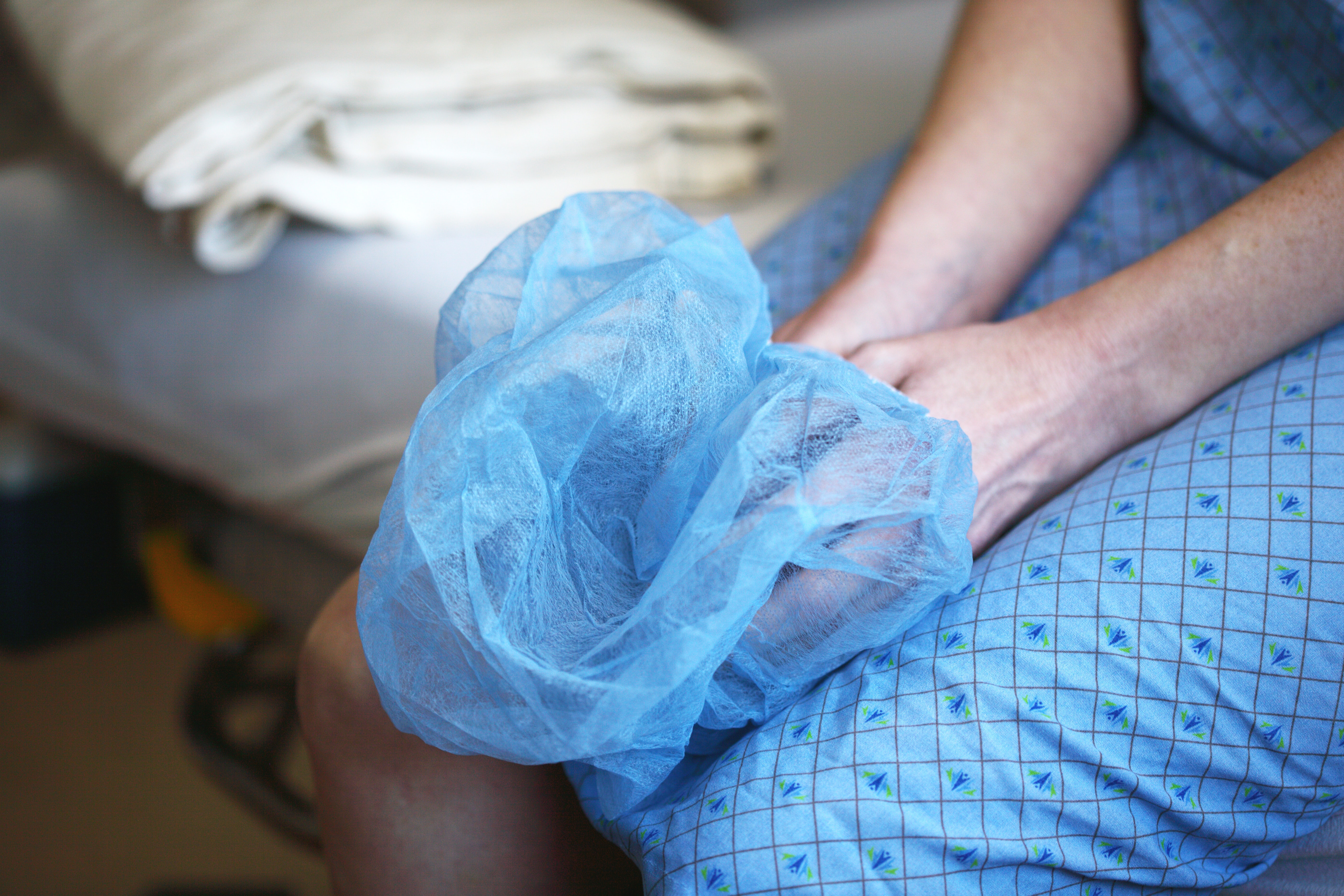To discuss the risks that cervical hernia surgery may entail, it is necessary to take into account the technique to be used by surgeon and the circumstances of the specific patient. We’ve prepared the following article to answer any questions you may have about it.
The possibility of complications occurring before, during, or after surgery is something that every surgeon bears in mind. However, with an experienced specialist and the appropriate technologies, the chances of complications occurring are greatly reduced.
Complications after surgery on a cervical herniated disc can occur in up to 15% of cases, although in many cases these are temporary, such as mild discomfort that will subside within a few days; which is why sometimes they are not perceived as complications, but rather just discomfort inherent to this type of surgery (such as difficulty swallowing or transient changes in the tone of voice).
What does cervical hernia surgery involve?
When the hernia is located at the level of the cervical discs, it can affect the nerve roots that arise from the spinal cord or affect the spinal cord itself. In these cases, the degenerated intervertebral disc ruptures at some point in its circumference and its contents come out and may press on a cervical nerve or the spinal cord.
If nonsurgical treatment options do not alleviate the patient’s symptoms, or if a nerve or the spinal cord are compressed, this is when surgery will be considered. In these cases, the operation most often recommended is a cervical microdiscectomy by anterolateral route. At Instituto Clavel, we are committed to using minimally invasive procedures whenever possible, and the surgery just mentioned is an example.
This procedure prevents damage to the muscles surrounding the vertebrae (a common cause of persistent or chronic pain in the postoperative period), and also prevents excessive manipulation of the spinal cord and nerves. In addition, it facilitates complete resection of the damaged cervical disc and nerve decompression using microsurgery.
Once the above operation is done, there are two options to proceed: perform an arthroplasty or ADR, which involves removing the damaged disc and replacing it with an artificial one, or carrying out an arthrodesis or cervical fusion, which consists of immobilizing the vertebral segment and releasing the compression on the spinal cord or nerve root.
At Instituto Clavel, whenever possible, we use the disc replacement option, since by using an implant which imitates the movement of a healthy natural disc, it allows the spine to preserve mobility, and it protects the adjacent discs from accelerated degeneration. In the following paragraphs we describe the risks of this surgery, and what the postoperative period is like.
Find out all about ADR or artificial disc replacement surgery
What happens after disc replacement surgery?
Most patients who undergo this surgery will need to have a drainage tube placed in the wound, and will need to follow a schedule of medication to help control the pain. The day after surgery, the specialist will be able to give the order for the drainage tube to be removed, which will allow the patient to start getting up and walking.
On discharge from the hospital, the patient will have to wear a soft cervical neck brace that will limit the movements of their neck. Ideally, for comfort and convenience, the brace should be worn for the first 30 days following the operation. The patient will be able to return to their daily routine gradually, but should avoid picking up or lifting heavy objects and also avoid excessive physical stress.
Causes, symptoms and treatments for C5-C6 cervical hernia

What are the risks after the operation?
In addition to the usual complications of spinal surgery, inherent to the surgical approach used and the surgery itself, the C6-C7 level has special considerations because of its proximity to structures of the upper chest and lower neck.
During surgery, the proximity of the recurrent laryngeal nerve (responsible for the movement of some muscles of the vocal cords) makes it vulnerable to injury. The vast majority of the time, this results in producing temporary changes in the tone of voice, noisy breathing, or sensation of scratchiness in the throat. In less than 2.5% of cases, these changes can be long-lasting (more than 6 months).
A complication that does tend to be more common after surgery at C6 C7 levels is difficulty swallowing or dysphagia. The esophagus is located just in front of the spine and must be mobilized and retracted during the operation, which can cause the patient to experience difficulty swallowing when waking up from anesthesia. This can occur in up to 67% of cases.
Dysphagia usually resolves in a few days, and although there is no consensus regarding the real frequency of this discomfort becoming permanent, it is known that it tends to be scarce, and well tolerated for the most part. It is reported less than 1.7% of the time. Direct lesions to the esophagus are very rare (less than 0.3% of the time) and usually occur in the context of patients who are undergoing a second surgery or who have an anterior cervical plate.
Below, we offer a general list of the other risks of a C6-C7 cervical hernia operation:
- Bleeding and infection: The chances of this happening are very low. However, in case of infection or bleeding, the patient may need to spend a few extra days in the hospital, be re-admitted, or require new surgery before they can go home.
- Nerve injury: radiculopathies (pain or worsening of the nerve condition), recurrent laryngeal nerve injury or exacerbation of myelopathies, are extremely rare after a cervical hernia operation.
- Future problems: depending on the procedure that was performed on the patient, in the future there is the possibility that they will experience problems in the adjacent discs; taking into account, also, the natural deterioration that is typical as time goes on.
Contact our specialists for answers to your questions
Categories: Spine treatments, Surgery, Cervical pain
